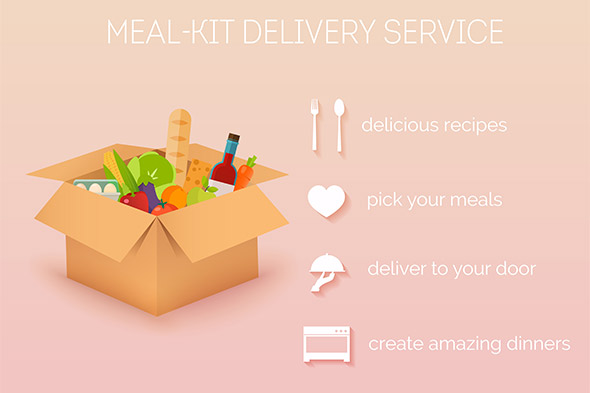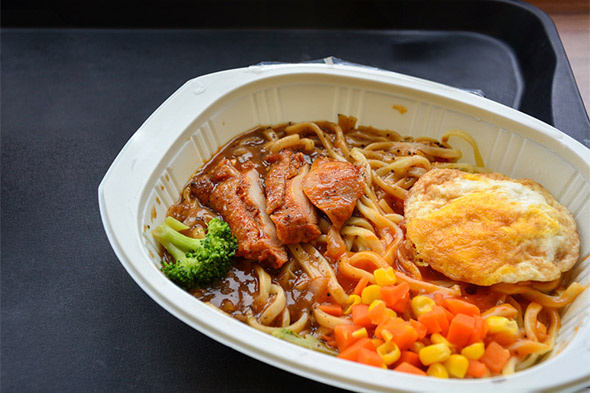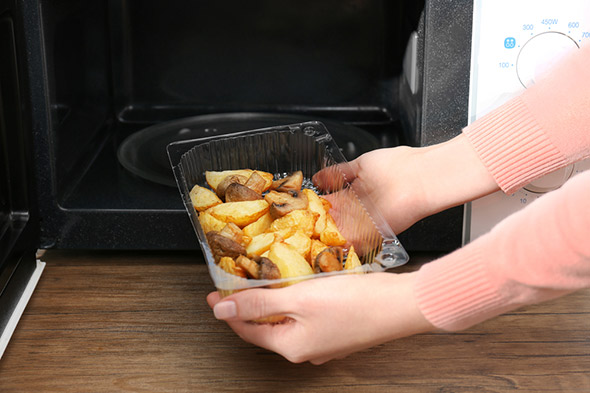
The Meal Kit Delivery Services Market
A meal kit is a subscription service that sends food ingredients and recipes to customers’ homes for them to prepare their own fresh meals according to the instructions. Services that send these kits are called meal delivery services. For on-the-go consumers – working parents and busy singles – with limited time at the end of the day, meal kits offer a reasonable and healthy alternative to take-out options and full home-cooked dinners. Delivered directly to households or bought at local grocery stores in prepacked portions, meal kits include pre-measured ingredients and easy-to-follow instructions, allowing customers to skip complicated and time-consuming meal preparation and to take a shorter, easier route to get their meals.
Meal Kit Stats
In the United States, the meal kit trend is booming. It is estimated that one in four adults has purchased a meal kit for delivery to a home or made an in-store purchase at least once in the last year, and 70% of those consumers continue to buy them after making their first purchase. With 60% of Americans opting for healthier diets to try to prevent sickness and disease, many consumers buy meal kits, which include fresh foods and easy-to-follow recipes, because they offer healthier and more nutritious options.
The statistics regarding meal kits indicate that although all types of people are buying them, a certain strata of society are more likely to opt for this convenient option than others. For example, men are 40% more likely to purchase kits than their female counterparts, while Millennials and Gen-X consumers are over 300% more likely to purchase them than people in older age brackets. In addition, families with children are purchasing meal kits 300% more than households without children.
For the year that ended in March 2017, meal kits in U.S. grocery stores (as opposed to those delivered directly to households) generated $80.6 million in sales, up 6.7% over the previous year. Even people who don’t rely solely on meal kits, except for an occasional indulgence, agree that these kits produce healthy meals; 92% of those who tried this type of service say they were satisfied with the quality of produce included in their meal kits, and 91% said they were satisfied with the quality of the meat packaging.

Meal-Kit Subscriptions: Ups and Downs
With convenience, ease, and mobility increasingly important to today’s American family, the burden of getting food onto tables across the nation is shifting to grocers, supermarkets, and other food-service outlets, including meal-kit delivery systems. Nonetheless, some people claim that the meal-kit trend has peaked, with industry leaders like Blue Apron struggling to reach their original expectations.
In an article entitled, “The Meal-Kit Industry is at a Crossroads. Will It Ever Figure Out What We Really Want?” The Washington Post discusses the future of meal kits, and it’s not all rosy.
Although people like meal kits because they appreciate not having to shop or think about finding recipes, they don’t like the excessive packaging and waste that inevitably comes with each meal. Although they like being exposed to recipes they wouldn’t have thought to make on their own, they don’t like how long it can still take to prepare the meals, and most think the meals are too expensive. And although the service can be “paused” for weeks or even longer, many people don’t like being locked into a subscription (sort of like a gym membership).
Things Are Still Looking Up
Nonetheless, despite the pros and cons of meal kits, it is predicted that meal-kit subscription revenue worldwide will top $10 billion by 2020. Meal-kit companies are competing for every customer in the hope that a slightly tweaked service or a strategically improved system will attract more business. Some companies are focusing on expanding choices and increasing customization, while others are doing away with subscriptions altogether and allowing one-time orders. And, to address the consumer complaint that the meals still take too long to prepare, companies are including things like prepared sauces and pre-roasted garlic to cut down on some of the more arduous prep tasks, so prep time is down to just about 15 minutes.

Despite the convenience of home delivery, it is expected that meal kits may see a shift from home delivery to consumers purchasing these kits on grocery store shelves. Supermarket meal kits have the advantage of having less packaging and allowing impulse purchases (as opposed to subscriptions), and they are usually less expensive than delivered meals. Ideally, the two markets – delivered and grocery-store kits – can exist in tandem, satisfying both the consumer who wants the option to pick up something at the store at the last minute, and the customer who likes to buy online.
The bottom line is that the future of meal-kit services lies in the degree to which people crave convenience. Even 15 minutes might be too long for someone who hates to cook. According to the Harvard Business Review, only 10 percent of consumers in a recent study said they love to cook while 45% percent said they detest it. For people who don’t enjoy preparing meals – even meals that are constructed and pre-organized by someone else, and delivered to their doorstep – take-out options, and even frozen dinners, like Lean Cuisine, are a more palatable option.
Meal Kits Remain a Viable Option
As 2018 kicks off, the meal kit industry in the United States is worth a hefty amount, dominating the market for both the amateur chef and the culinarily-challenged who crave simple meal preparation without sacrificing quality or convenience. Younger consumers who are looking for organic, vegetable-centric, or specialty diets will be looking to meal kits to balance high-quality ingredients with a tolerable price tag. Meal kits will probably never replace grocery shopping or cooking from scratch, but they are a viable and welcome option for people who are looking to bridge the gap between take-out food and a hot, fresh, home-cooked meal.